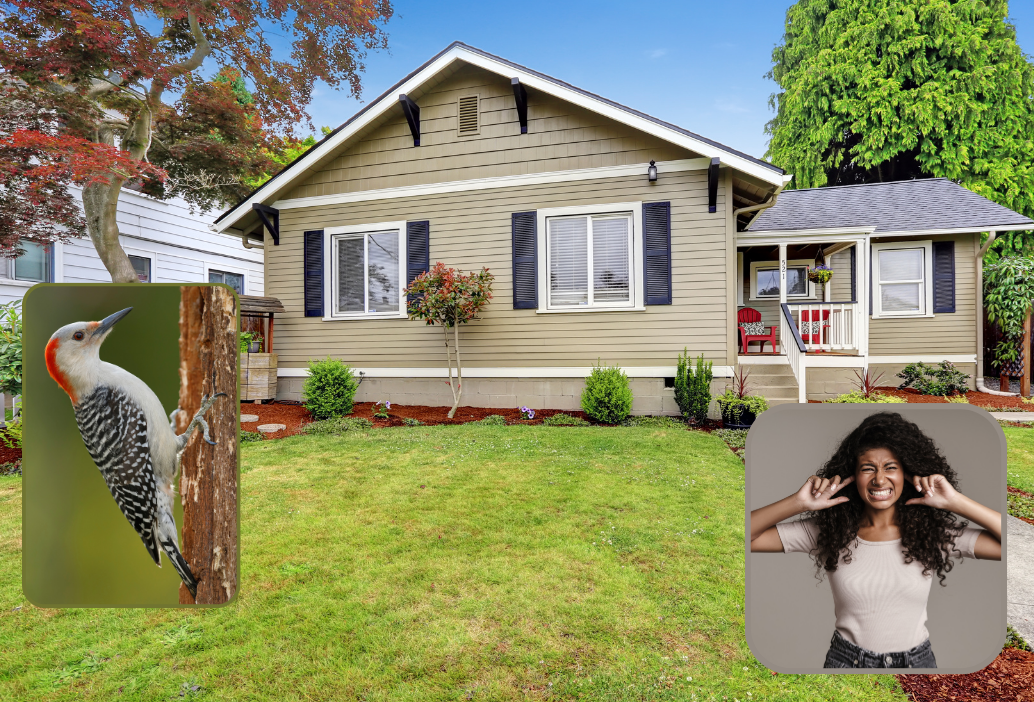Every spring, I start hearing from people with a very peculiar problem. As the days start to get warmer and longer, some households get a new—and unwelcome—alarm clock. Every morning, they hear a sharp, drumming rattle on the walls, roof, or gutter of the house. It can be loud enough to echo throughout the living space! Perhaps you can guess where this is going. The question I always get is, “Charles, why do woodpeckers drum on my house?”
In this Naturalist Answers post for Gulo in Nature, we’ll learn about woodpeckers, their drumming behavior, and what you can do about it.
Year-round neighbors
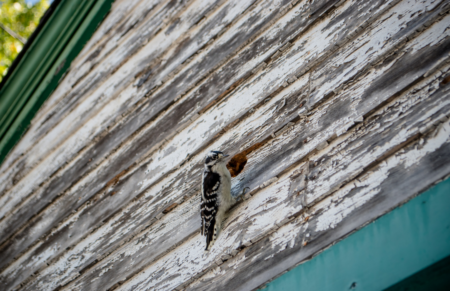
One of the first things people mention to me is how suddenly the drumming starts. It’s always in late winter or early spring. Once it starts, it can be every day, and many times a day. However, the same people often spent the winter happily reporting woodpeckers at their birdfeeders. People rightly observe that the woodpeckers have been around all along, so why do they create problems now?
Indeed, woodpeckers don’t tend to migrate like songbirds. They have a tendency to stay put all Winter and are frequently spotted in back yards. However, just like their migratory cousins, woodpeckers do start to breed in the Spring. And this comes with major changes in behavior, and—you guessed it—a lot of noise.
Love is in the air
Springtime is the breeding season for many animals. This is because the weather becomes more agreeable and resources like food become more abundant. Breeding animals claim these resources by setting up territories and advertising themselves to potential mates. When the weather gets warm and animals get riled up, they engage in behaviors that help them stake out their turf.
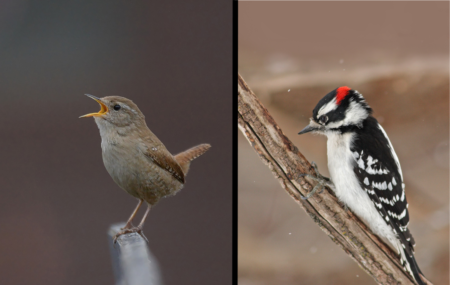
Many birds do this by singing. This is why you might hear loads of birdsong in the morning during warmer months. By contrast, woodpeckers aren’t very good songsters. Although they have many calls, one of their best territorial advertisements is drumming.
Drumming when a woodpecker taps its bill against a surface with a particular rhythm intended to create an audible sound. While woodpeckers most often peck at wood to excavate holes to live in or find food, this is different. Unlike their routine pecking, drumming is only about producing sound. Because of that, woodpeckers will typically drum on hollow branches that make a better, more percussive noise.
This noise is intended to send a message: “You’re on my turf!”. This message lets females know that there is a breeding male in the area, and tells other males to stay away.
Drumming usually sounds like a rapid, staccato series of taps rather than a random, slow tapping. If you hear drumming, woodpeckers are not looking for food. If you hear occasional, sporadic taps, the woodpecker is foraging. Foraging woodpeckers on your house suggest a different set of problems.
So, why do woodpeckers drum on houses?
Woodpeckers will drum on houses for one major reason: it makes a good noise! Many surfaces of a house or other building can make louder sounds. The louder the sound, the better the advertisement. Some of their favorite surfaces include:
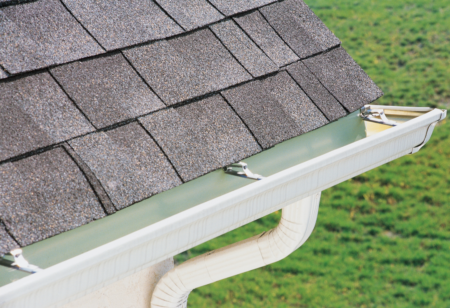
- Gutters (that’s a lot of noise!)
- The corners of roofs

- Shutters
- Downspouts
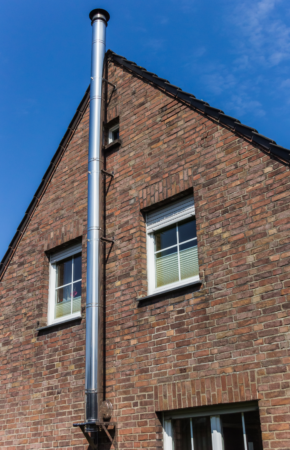
- Metal chimneys
- Slides and swingsets
- Vents
Woodpeckers choose these spots because they resonate well. You can think of them like a little kid with a pair of drumsticks. They prefer whatever surface makes the most noise when they bang on it. Unfortunately, that kind of noise can really disrupt your peaceful home life.
Know your woodpeckers
When dealing with any kind of wildlife, its especially important to know who you’re dealing with. Getting to know some of the common North American woodpeckers is a great first step to understanding your noisy neighbor.
Although birds like the Great-spotted woodpecker (Dendrocopos major) and Green woodpecker (Picus viridis) are somewhat common in parts of Europe, they are apparently more considerate neighbors. In other words, I rarely get reports of them drumming on houses. In fact, in all the time I’ve spent visiting and living in Europe, I never saw them causing similar problems. Because of that, this seems to be a very American problem.
The usual suspects
Here are some of the most common woodpeckers in North America:
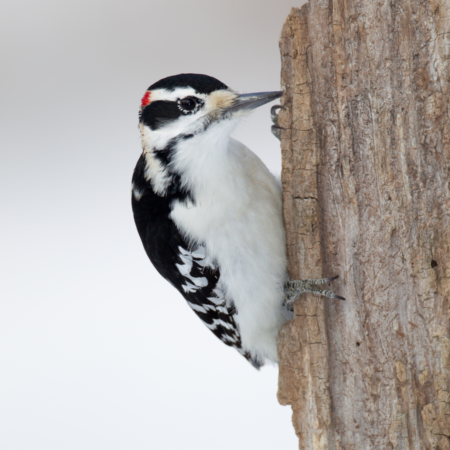
- Downy and Hairy woodpeckers are relatively common throughout most of the country, with downies showing up more often in urban and suburban neighborhoods.
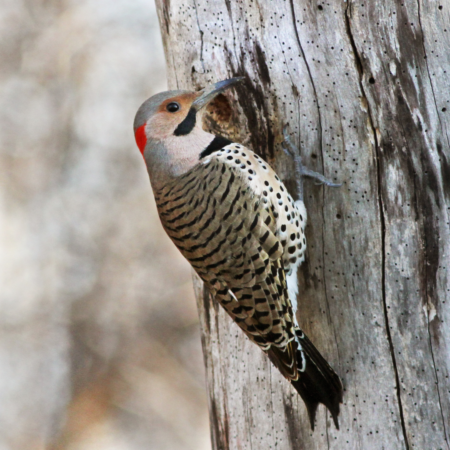
- Northern flickers are especially numerous in the rocky mountains, but occur more or less year-round throughout the country.
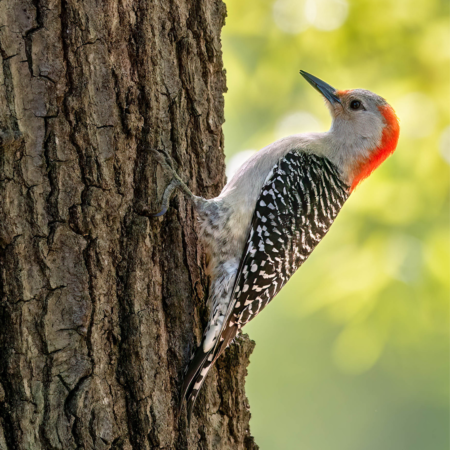
- Red-bellied woodpeckers occur throughout the Eastern U.S., and are extremely abundant in the Southeast. They occur in areas with fairly large trees and are often the culprit of house-drumming complaints.
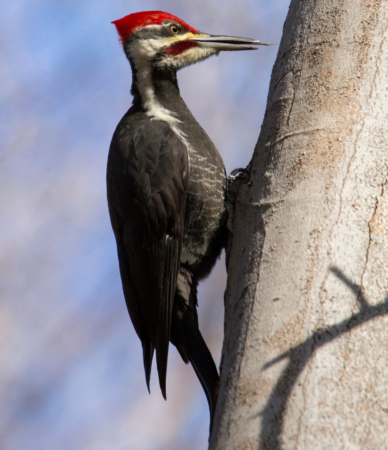
- Pileated woodpeckers are the largest species in North America. They require more mature forests than other species and are thus more common in areas with larger trees. They can make a LOT of noise!

- Acorn woodpeckers are found throughout much of the West coast (especially California!) and are very social. They tend to be more vocal than other woodpeckers and you’ll know if they’re around.
Once you’ve figured out which of these species you’re dealing with, you can look up more information on them. For example, it might help to learn about their diets, or what kind of trees they like. You can find this and much more using field guides or non-profit pages like All About Birds.
How do I stop woodpeckers that drum on my house?
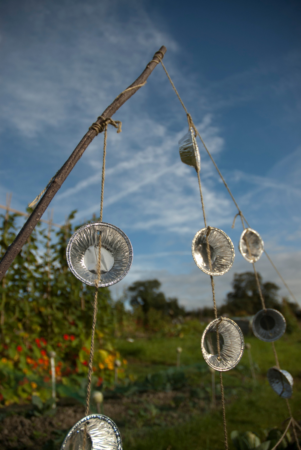
Having a woodpecker drumming on your house can be a difficult situation. After all, it can be super loud and disruptive, and the woodpecker will typically fly away whenever you come outside. Importantly, you can’t do anything that might harm the woodpecker to remove it. This is because, woodpeckers, along with most other birds in North America, are protected by national and international laws.
Keeping the drummers out

Because removing woodpeckers is impractical at best and illegal at worst, excluding them from your home is the best option. Installing bird-proof netting around objects upon which they might drum is a great way to go. You can put it over grills or swing sets when not in use, or attach it to the eaves of a house.
Since woodpeckers are typically only drumming for a few weeks of the year, you won’t have to do this forever.
Another great option is objects that frighten woodpeckers. Statues of owls and other predatory birds might intimidate them and make them look elsewhere for drumming spots.
Similarly, moving objects that shift or spin in the wind can work well. This includes bird scaring devices and wind socks.
Thanks for reading “Why do woodpeckers drum on my house?”
Have you found any particularly effective methods for keeping woodpeckers away? Share with us in the comments! If you have other questions you’d like answered in Naturalist Answers, don’t hesitate to reach out via the Contact page or connecting with us on social media.

